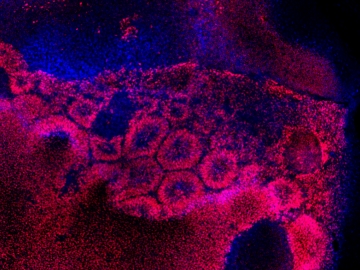We are interested in identifying and understanding the external molecular cues that guide the development of neurons. These include secreted extracellular matrix (ECM) molecules and cell surface molecules that influence cell fate, cell adhesion and migration, axon pathfinding, and synapse formation. All of these events are mediated by specific neuronal receptors that recognize extracellular molecules and transduce signals across the membrane to elicit intracellular changes. By employing a broad arsenal of modern molecular techniques, we hope to gain an understanding of how neurons respond to these factors and what role these interactions play in vivo. One research interest has been the functions of integrin receptors in the developing nervous system, focusing on retinal neurons and sympathetic neurons that innervate the heart. Integrins are transmembrane receptors for ECM proteins such as laminin and fibronectin, and cell surface adhesion molecules such as VCAM-1. Most recent studies have centered on the α4β1 integrin. While this integrin has been shown to play important roles in inflammatory responses, we were the first to show it is also expressed in the nervous system. In the retina, we found that this receptor is important in neuronal survival. In the heart, we showed that the α4β1 integrin is important in the elaboration of sympathetic axons into cardiac tissue.
We have also investigated a number of the ECM components found in the nervous system, such as laminins, fibronectins, collagens, and the matrix metalloproteinases that degrade them. We have found novel roles for the ECM proteins osteopontin and thrombospondin-4 in the developing retina. Both molecules reside in the optic nerve at the time retinal ganglion cells (RGCs) extend axons to the brain, and we have shown that purified osteopontin supports RGC axon growth in vitro. The integrin α4β1 on RGCs serves as an osteopontin receptor that mediates axon extension on osteopontin. Thrombospondin-4 may play a role as an organizer of optic nerve ECM. Further experiments are underway using genetic strategies in mice to investigate the functions of these ECM proteins in the eye.






